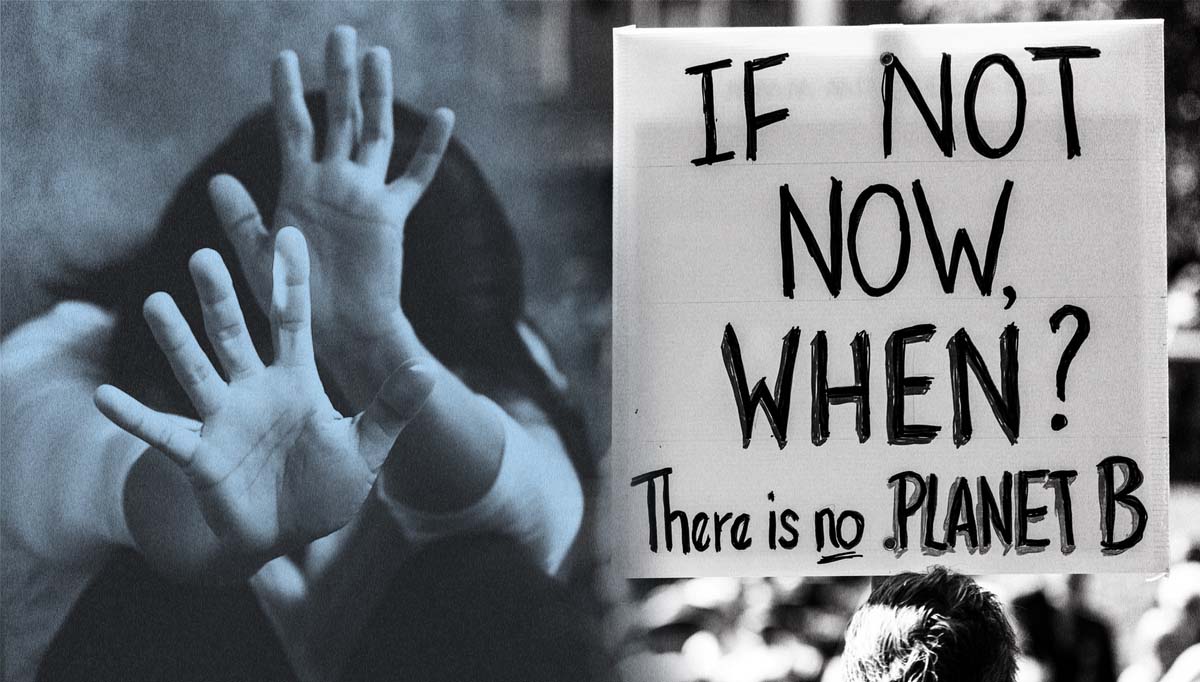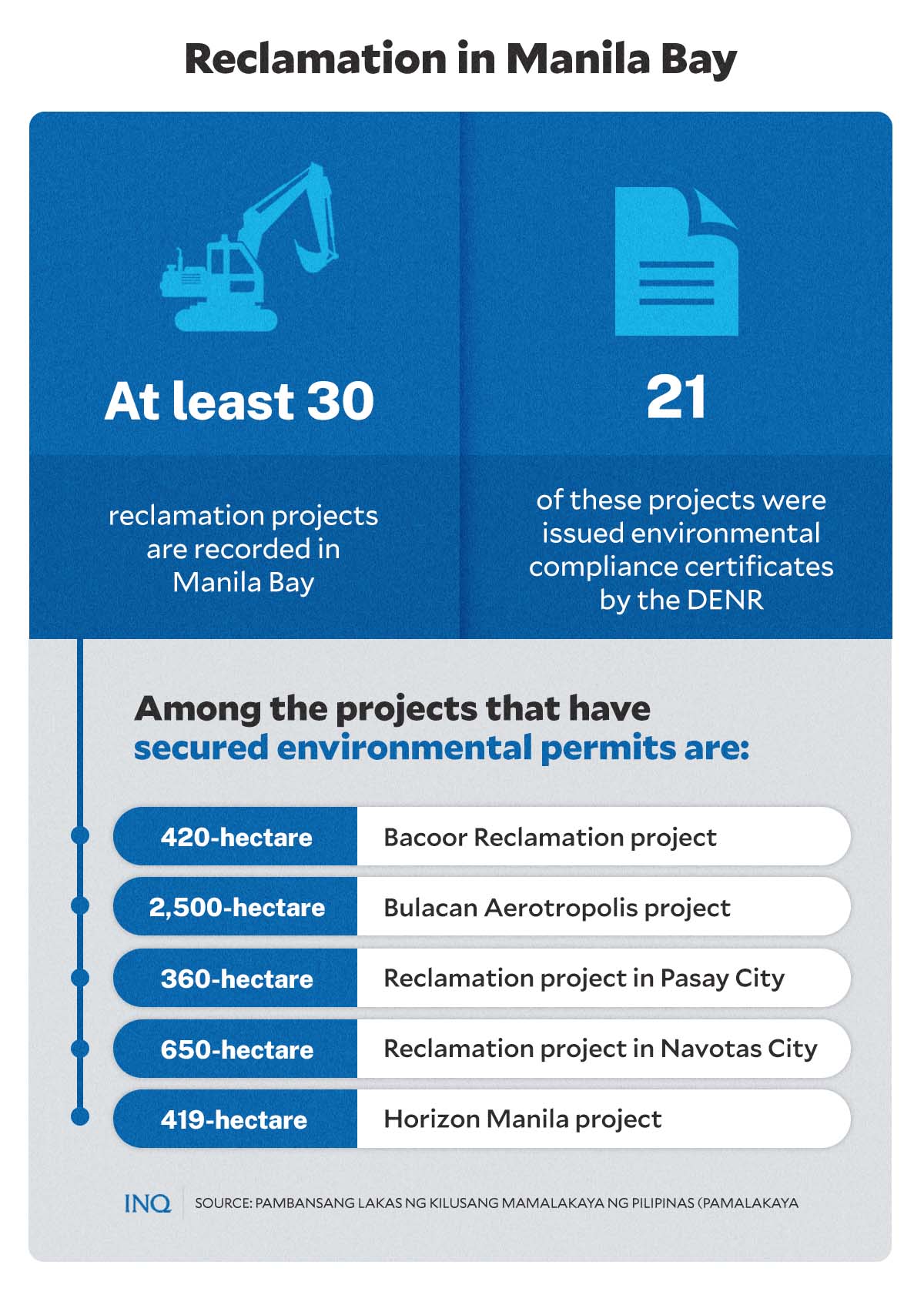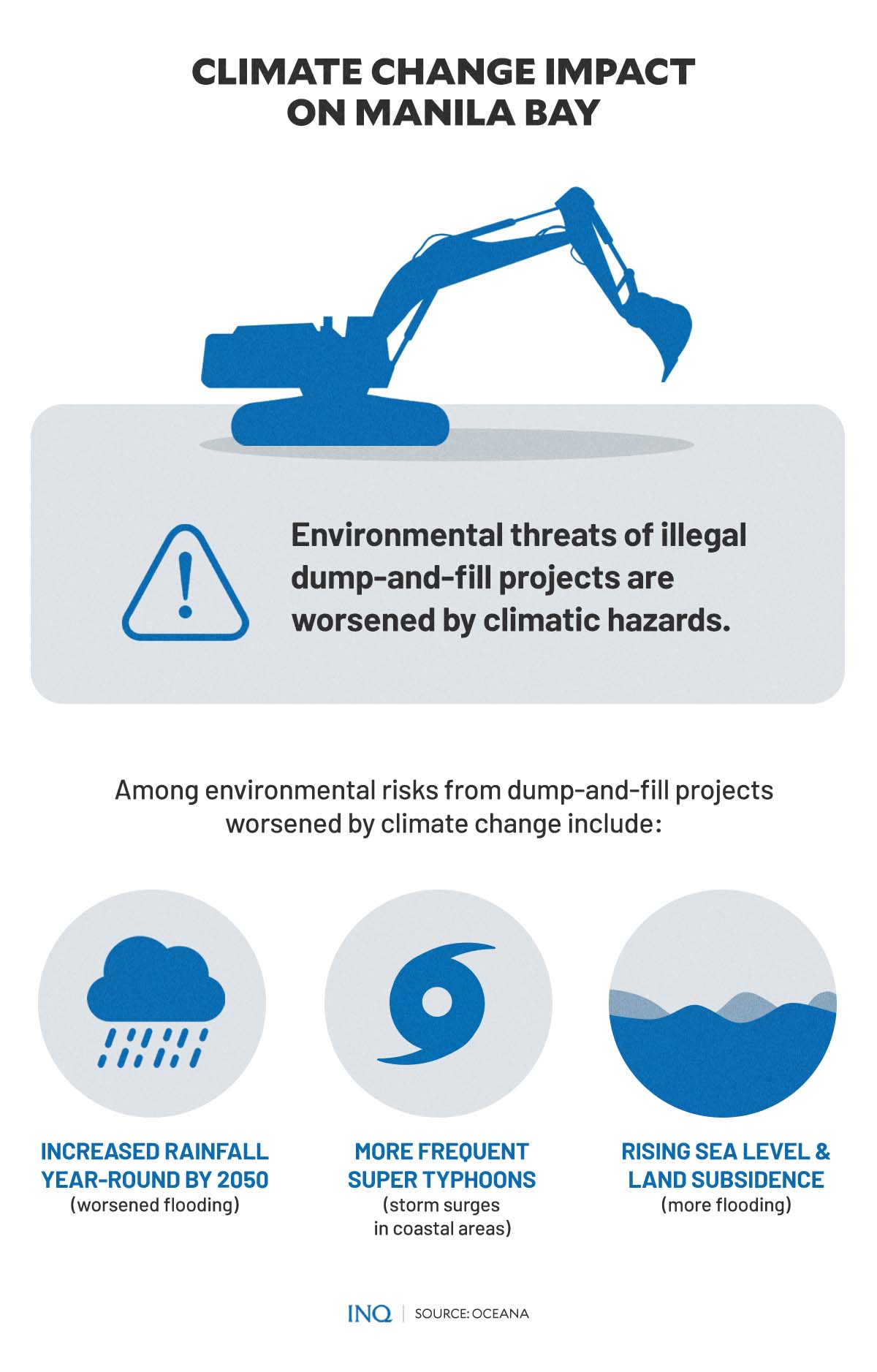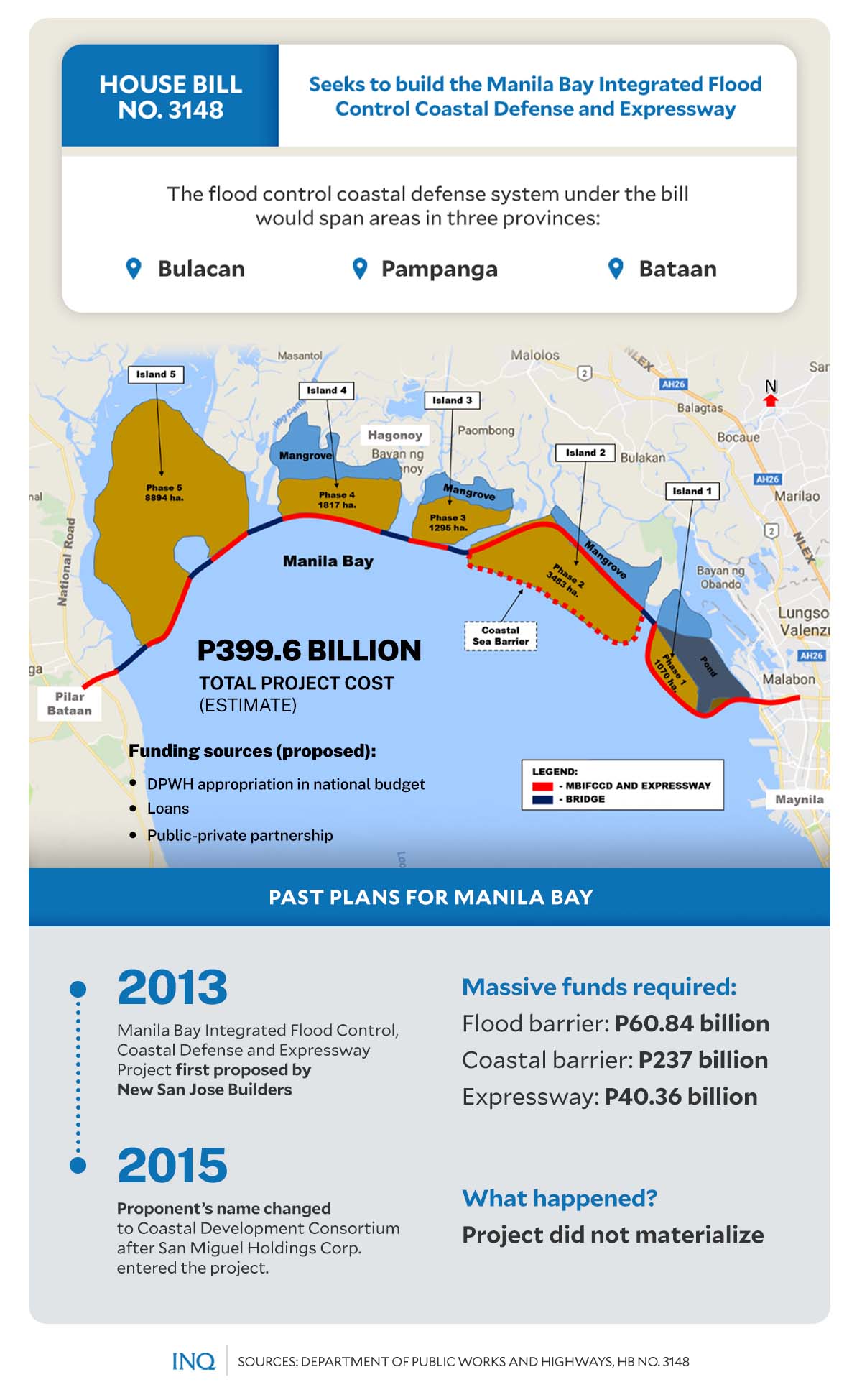Earth Day 2023: PH advocates tackle reclamation, plastic waste
MANILA, Philippines—In this year’s Earth Day celebration, scientists, environmental defenders, and organizations in the Philippines highlighted two of the country’s most prominent environmental issues—ongoing reclamation projects and piling plastic waste.
On April 22, billions of people across the world celebrated Earth Day—which, as described by National Geographic, is “an annual celebration that honors the achievements of the environmental movement and raises awareness of the need to protect Earth’s natural resources for future generations.”
In line with this year’s “Invest in Our Planet” theme for Earth Day, people took to the streets to call on governments and corporations to take action on the worsening “triple planetary crisis” of climate change, biodiversity loss, and pollution.
In the Philippines, multi-sectoral advocates gathered to protest reclamation, dump-and-fill, and other ongoing destructive activities in Manila Bay and other parts of the country.
According to the nongovernmental organization AGHAM-Advocates of Science and Technology for the People, these activities have “grave ecological and economic consequences.”
Article continues after this advertisementREAD: LOOK: Fisherfolk, environmental activists hold anti-reclamation protests to commemorate Earth Day
Article continues after this advertisement“As we celebrate Earth Day today, we continue to remind the Marcos administration, and the DENR (Department of Environment and Nation Resources), that protecting the environment is first and foremost about protecting the people and securing their future,” said Jerwin Baure, public information officer and marine scientist of AGHAM.
“Climate crisis is happening right now, and the people are demanding the government to act fast. Time is ticking, and lives and livelihood are at stake. We demand the government to show its commitment in mitigating the impacts of the climate crisis through stopping ecologically destructive projects such as reclamation,” Baure added.
Reclamation, dump-and-fill projects
AGHAM, fisherfolk, and other environmental organizations urged a stop to the ongoing reclamation and dump-and-fill projects in Manila Bay.
Citing data from the Philippine Reclamation Authority (PRA), AGHAM stressed that at least 50 reclamation projects are at “various stages of development in the country” as of September 2022.
Of those, 24 projects have been approved and issued environmental compliance certificates (ECC) by the DENR, while 26 are still in the application stage. PRA estimated that the total area of reclamation projects in the entire country is at least 11,800 hectares.
READ: Manila Bay not dead, but reclamation killing it, say groups
Previous data from militant fishermen’s group Pambansang Lakas ng Kilusang Mamamalakaya ng Pilipinas (Pamalakaya) showed that at least 30 reclamation projects have been found in Manila Bay. Of those, 21 projects have already been issued ECC.
A separate study by conservation group Oceana found at least 22 reclamation projects on Manila Bay—half of which were already “underway” as of last February 28.
“This number is still an underestimation as other coastal development projects that involve dumping and filling of soil into our coasts are not listed under the PRA,” Baure said, adding the 2,500-hectare Bulacan Aerotropolis project as an example.
Baure stressed that since 2020, the project had caused the destruction of mangrove forests and mudflats and has displaced fishing communities.
He noted that another proposed project not filed under PRA, the Manila Bay Integrated Flood Control, Coastal Defense and Expressway, could impact the mangrove ecosystems in Bataan, Pampanga, and Bulacan.
“This project is especially alarming as it is proposed to be located near a Ramsar site in Sasmuan, Pampanga. The negative impacts of reclamation and other destructive projects far outweigh the promised economic development that these projects would bring,” he explained.
House Bill No. 3148, filed last month, proposes the establishment of that coastal defense system in Manila Bay to “protect the shoreline from future rises in the sea level,” particularly the northern part of the bay, which covers the coastal areas of Bulacan, Pampanga, and Bataan.
Environmental advocates opposed the P399.66 billion project, explaining that it will not address flooding and rising sea levels in the coastal areas at the northern portion of Manila Bay. Instead, it will “decimate coastal communities & ecosystems” in the affected areas.
READ: More harm than good seen in revived plan to build flood control, expressway project on Manila Bay
The plastic problem
According to the UN Environment Programme (UNEP), around 7 billion of the 9.2 billion tonnes of plastic produced from 1950-2017 became plastic waste, ending up in landfills or dumping.
The World Economic Forum estimated that only 16 percent of plastics produced globally are recycled. Most of those that were not sent to recycling plants end up in rivers and oceans—which poses a risk to “animals and plants whose habitats have become aquatic garbage patches.”
In 2021, the online scientific publication website Our World in Data (OWID) published data showing that the Philippines was one of Asia’s most significant contributors to marine plastic pollution.
OWID found that at least 81 percent of the 4.8 to 12.7 million tons of global plastic waste in the oceans came from Asian rivers.
Of the top 10 largest plastic-emitting rivers in Asia, seven were from the Philippines – namely the Pasig River, Tullahan River, Meycauayan River in Bulacan, Libmanan River in Camarines Sur, Rio Grande de Mindanao River, and Agno River in Pangasinan.
READ: Pasig River makes international waves despite being dead
This brings the country’s total marine plastic input to at least one-third or 36 percent of the total ocean plastics emitted from Asia.
READ: PH rivers yield bulk of Asia’s marine plastic wastes
Greenpeace Philippines pushed for a cap on production, an immediately planned phaseout of single-use plastics, and an urgent transition to zero-waste reuse models to spare the youth and future generations from the dire impacts of plastic pollution and climate emergency.
“This year’s Earth Day theme, ‘Invest in our Planet,’ couldn’t be more timely. It’s indeed time for countries, especially corporations, to invest in genuine zero-waste solutions that will safeguard people and give the youth a plastic-free future they deserve. Young people have the most to gain if we act on the plastics issue—and the most to lose if we don’t,” said Greenpeace Philippines campaigner Marian Ledesma.
“We need a strong and ambitious Global Plastics Treaty that won’t just drastically reduce plastic production and turn off the plastic tap, but also drive industries and nations to invest in sustainable and socially equitable solutions to protect future generations from plastic pollution.”
PH children bear brunt of climate change
A previous report by Unicef found that heatwaves, or prolonged periods of extreme high temperatures, are becoming longer, stronger, more widespread, and more frequent due to the climate crisis—and this causes a devastating impact on children worldwide.
“Heatwaves are a global phenomenon. As extreme high temperatures increase and the longevity, duration, and severity of heatwaves accelerate, children are increasingly exposed to heath-related vulnerabilities,” the report stated.
Globally, 559 million children are currently suffering from the impacts of high heatwave frequency. By 2050, over 2 billion children are forecast to face more frequent heatwaves or one of three other high heat events—high heatwave duration, high heatwave severity, or extreme high temperatures.
Unicef found that in 2020, an estimated 1.1 million children in the Philippines had already been exposed to high heat frequency—or 4.5 or more heatwaves per year, while around 1.9 million children in the country were affected by high heatwave duration or prolonged heatwave, which usually lasts 4.7 days or longer.
In 2050 under the low emission scenario, the number of Filipino children who will suffer the effects of having five or more heatwaves rises to 33.5 million, or 99 percent of all children living in the country that year.
At least 26.3 million Filipino children—77 percent of the estimated total children in the country in 2050—will experience high heatwave duration.
Under the very high emission scenario in 2025, 33 million children in the Philippines (99 percent) will experience high heatwave frequency, while 30.6 million (92 percent) will bear brunt of the impacts of the days-long heatwaves.
Last year, a preprint study by The Lancet investigated climate anxiety or “eco-anxiety”—characterized by a wide range of painful and complex emotions like worry, fear, anger, grief, despair, guilt, shame, and hope linked to the climate crisis—in children and young people globally.
The study—the largest of its kind—surveyed 15,543 children aged 16-25 years old from 10 countries, including the Philippines, United Kingdom (UK), Finland, France, United States (US), Australia, Portugal, Brazil, India, and Nigeria.
Results showed that the highest number of respondents who felt “very worried” and “extremely worried” about the impacts of climate change were from the Philippines (84 percent: 49 extremely worried, 35 very worried).
READ: ‘Eco-anxiety’: PH children among most stressed by climate crisis
“These images capture the future that we dream of—a world where our environment is teeming with life, a world with a thriving biodiversity, a world free from plastics,” said BFFP Youth Ambassador Christian Derafera during this year’s Earth Day celebration.
“We must not let future generations inherit a degraded planet, but rather, nurture a home where it’s safe for them to live and dream. Investing in our planet is investing in the youth’s future,” he added.
TSB
RELATED STORIES:
https://newsinfo.inquirer.net/1647651/microplastics-the-nearly-invisible-poison-in-our-oceans
https://newsinfo.inquirer.net/1652663/for-posting-edited-dolomite-project-just-one-of-many-ecological-threats-seen-in-manila-bay
https://newsinfo.inquirer.net/1651898/tip-of-the-iceberg-dolomite-beach-and-flooding-in-manila
https://newsinfo.inquirer.net/1706277/up-scientists-race-to-find-plastic-eating-microbes





